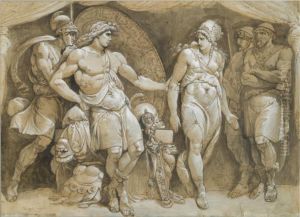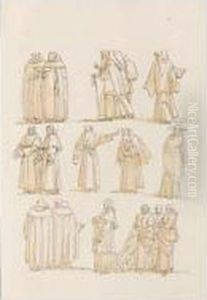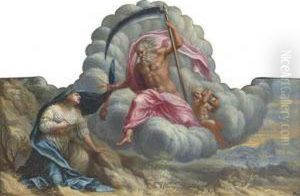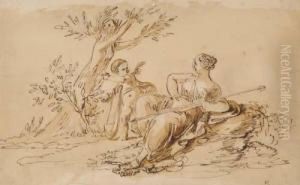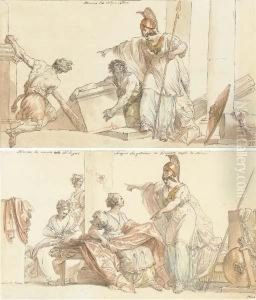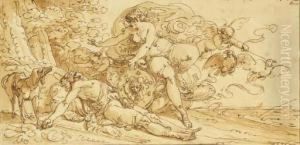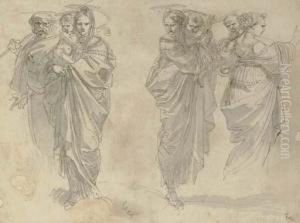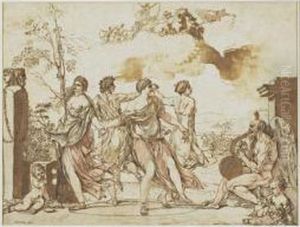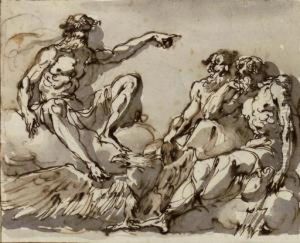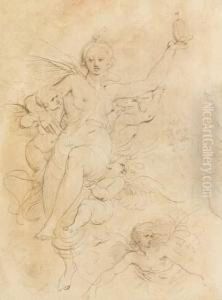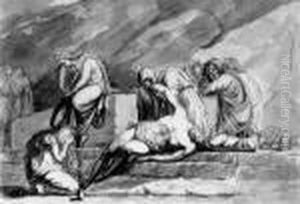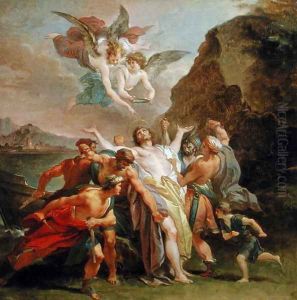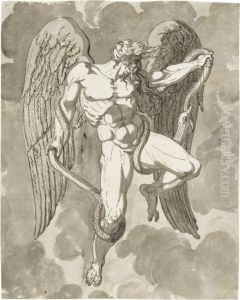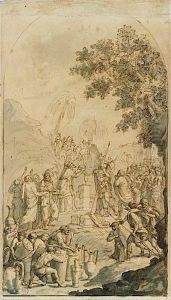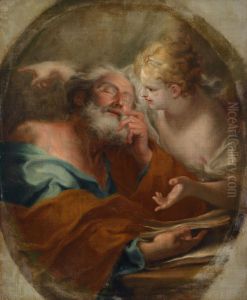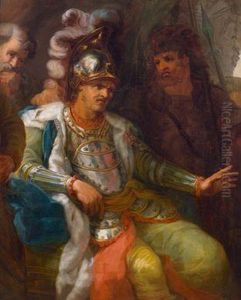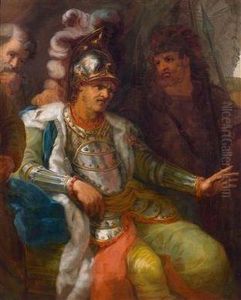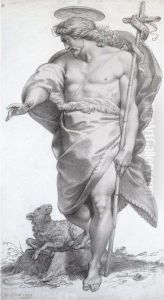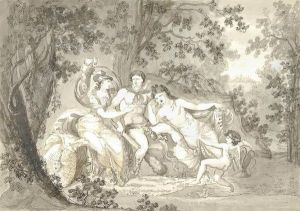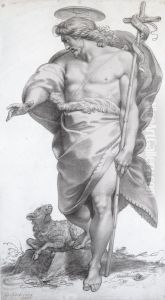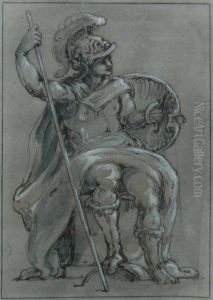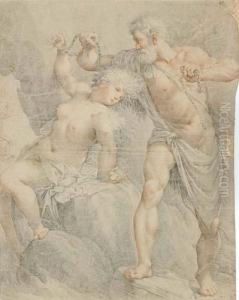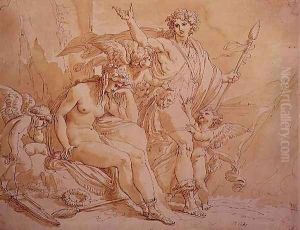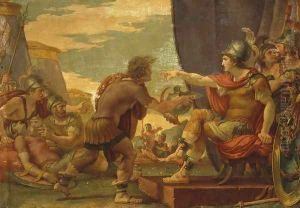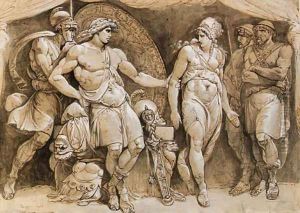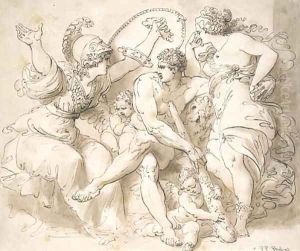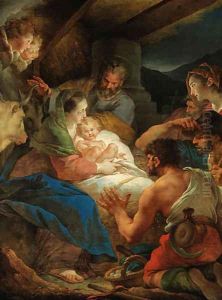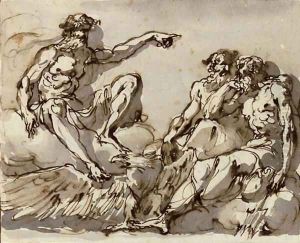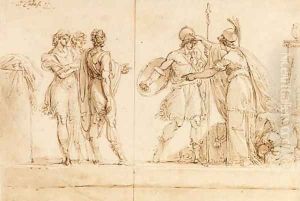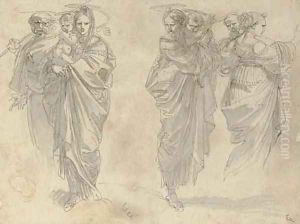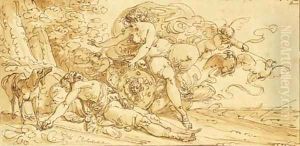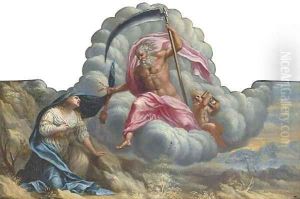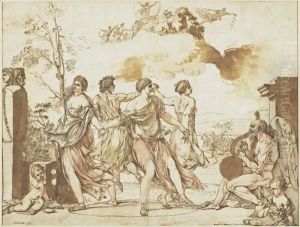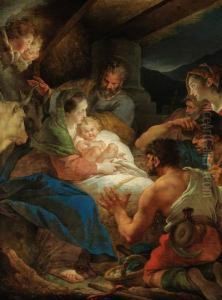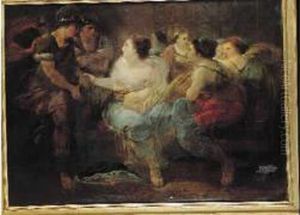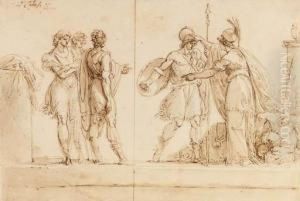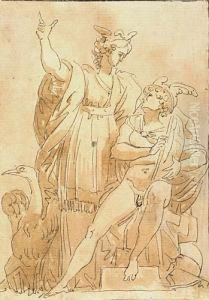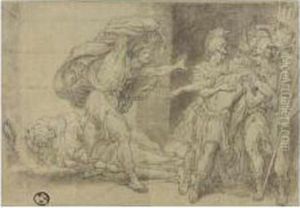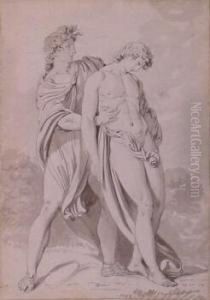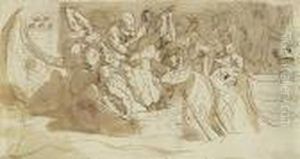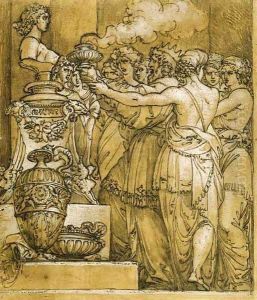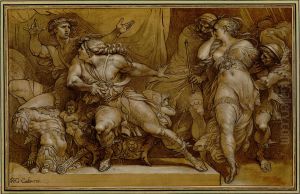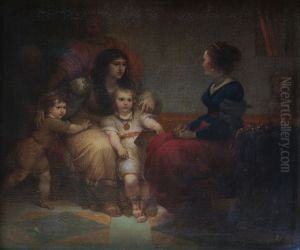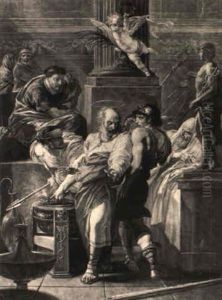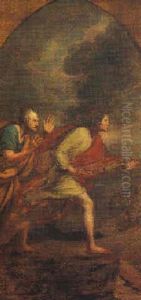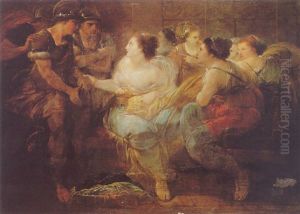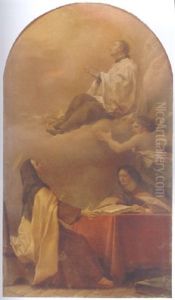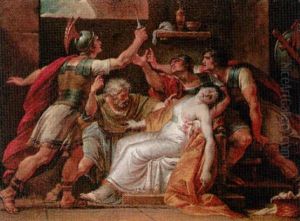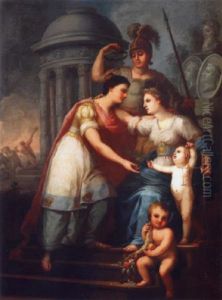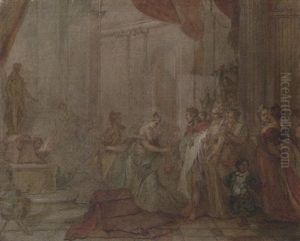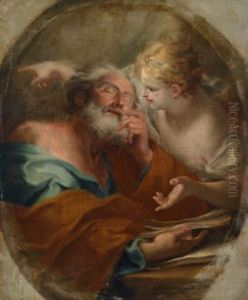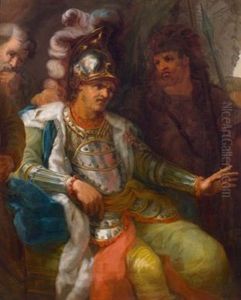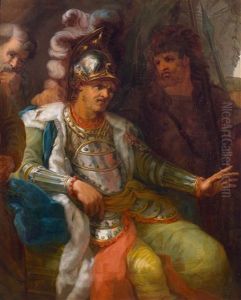Giuseppe Cades Paintings
Giuseppe Cades was an Italian painter and sculptor who worked in a Neoclassical style. Born on December 8, 1750, in Rome, Italy, Cades became well known for his classical approach to art during a time when Neoclassicism was gaining popularity in Europe. He was influenced by the works of the great masters of the Renaissance and Baroque periods, and his style was also affected by his contemporaries and the changing art movements of his time.
Cades received his initial artistic training at the Accademia di San Luca in Rome. His early works were mainly religious and mythological scenes. He had a talent for drawing and was praised for his ability to capture the human figure with dynamic poses and expressive forms. His works included a wide range of subjects, such as historical scenes, portraits, and allegories.
Despite his talent, Cades struggled financially throughout his career. He was never appointed to any significant official position, which was a common way for artists to secure a stable income during that era. Nevertheless, he continued to produce a substantial body of work, which was appreciated for its creativity and technical skill.
Cades' work was characterized by the use of dramatic lighting and strong contrasts between light and shadow, a technique known as chiaroscuro, which was popular among Baroque artists. He also exhibited a refined sense of composition and detail, which added a sense of drama and emotion to his paintings.
Sadly, Giuseppe Cades' life was cut short when he died on December 10, 1799, at the age of 49. Despite his early death, Cades left behind a legacy that contributed to the development of Neoclassical art in Italy. His works can be found in various museums and collections around the world, attesting to his enduring influence and the appreciation of his artistic talent.
